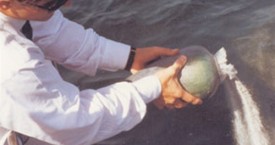Many who choose direct cremation use the scattering of their ashes (also called remains) as a way to make a final connection to a place that is emotionally important to them. Others choose to fulfill a dream they were not able to achieve in their lifetime.
Methods for ash scattering:
- Sea or water burials – ashes are tossed into the water

- Casting – tossing ashes into the wind (be sure to cast downwind)
- Trenching – dig a shallow trench in the ground and bury the ashes
- Raking – gently mix the ashes into loose soil
- Scattering Urn – specially designed urns that will gradually disperse ashes
Locations for scatterings are only limited by your imagination, budget and local regulations.
- In places that are of significance or hold special memories (favorite vacation spots, family property, existing cemetery plots)
- Space launches on satellite shuttles
- Aerial scatterings on flights for families who want to scatter ashes over landmarks or parks
- Sea excursions by boat or plane to spread ashes over water
- Fireworks embedded with ashes
Burial at sea services can be done by ship or by aircraft. Both options allow for you to choose whether to attend in person or have a reputable service scatter the ashes for you.
By Boat
If you choose to participate you should be accompanied by a licensed Captain. They should know and understand the requirements of that jurisdiction. Your specific requests will be incorporated and they can make suggestions which will make your ceremony more rewarding.
For families that are not present, the same ceremony can occur but the documents are mailed to you immediately following the event.
By Plane
Ashes can be scattered offshore by airplane. A licensed pilot takes the ashes and disperses them over the sea. It is not typical that family members are present in the plane but exact dispersal location coordinates are provided on the documentation.
Naval Scatterings at Sea
The United States Navy provides final disposition of remains on Navy vessels during deployments at sea. Eligible people include active duty members of the uniformed services; retirees and veterans who were honorably discharged. U.S. civilian marine personnel of the Military Sealift Command; and dependent family members of active duty personnel, retirees, and veterans of the uniformed services.


